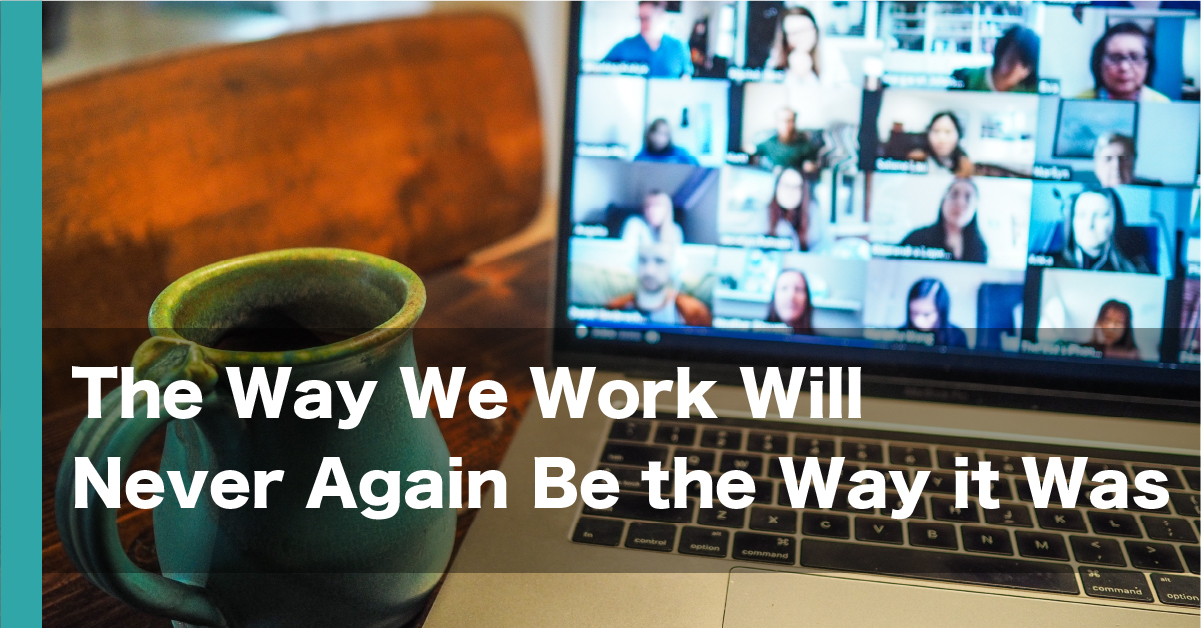The workplace changed drastically during the pandemic, and companies waiting for things to go back to normal will be greatly disappointed. People don’t want normal offices or normal jobs anymore. People are still quitting their jobs in record-high numbers, and it’s mostly because their employers are asking them to return to the office and return to normal.
But we all found a “new normal” during the pandemic. At first, it was required to survive, but now we all know that the way we work doesn’t have to be the way it was. According to Markus Buckingham in the Harvard Business Review (HBR), the way we worked was not working even before the pandemic.
Leaders are left wondering, “So now what?”
Employers have shown some willingness to compromise, according to The Guardian. Giving employees some flexibility about where they work — sometimes — seems to be a common theme. But minds have not shifted on expectations of how and why people work.
Among business leaders, the traditional idea of the all-American work ethic, and expectations that workers should hustle and work long hours — or at all hours — still prevails.
What people want is more than the opportunity to work outside the office now and then. The pandemic made them rethink everything, and leaders need to recognize and embrace that change.
Change requires a mental commitment
The truth is, change brings opportunity. Leaders need to help people love their jobs — maybe like, or at the least, not hate their jobs. But to get to that point, we need some honest conversations to understand how to get there.
Most employers probably know they need to have these discussions, but they don’t know how to embrace or lean into the required vulnerability.
Most leaders don’t personally know how to have vulnerable conversations that allow for opportunities to surface. It’s not part of their culture, and it’s not something commonly taught. So they just keep doing what they’ve always done, which sustains the old normal.
Shifting the focus to human needs
The focus has remained on where we work rather than what we do or why we do it and whether anyone cares. According to Buckingham, “to attract and retain the best people…we must redesign jobs around a simple but powerful concept: love for the content of the work itself.” And they only need to love it about 20% of the time.
Research “…suggests that if less than 20% of your work consists of things you love to do, you are far more likely to experience physical and psychological burnout.” More than 20% doesn’t contribute significant benefit. “A little love of what you do at work goes a long way,” says Buckingham.
To move toward a healthier workplace culture that understands the needs and wants of the talent they need to retain, leaders must start by understanding what their employees are thinking and feeling. But how do we create fluidity in how we communicate with employees? How do we help people fall in love with their jobs?
Start with questions and conversation
Leaders need to be asking themselves questions like, “Who do we need to get around the table to start these conversations?” “Will people even trust me? And if not, how do I change that?” “Am I the right person to have this conversation, or do I need an objective third party?”
Sometimes internal conversations need an external spark to get the ball rolling.
I saw this trend coming. Back in May 2020, long before there was a broad awareness of how impactful the pandemic would be, I led a round table webinar. I said then that we should look at ourselves as startups because business would not be the same game going forward.
My message was to throw out the rules of how you do businessand start over like a startup — because all businesses were about to require a new start.
What I propose
Leaders need to be meeting with other leaders to develop and assess their ability to move forward. We need an intentional shift in business culture and how leaders engage with their teams.
Forget those tedious and expensive annual reviews that providelittle benefit. We need to focus instead on regular, weekly, or monthly check-ins. And we need to do it in a way that helps our teams love their jobs enough to achieve optimal outcomes.
More frequent conversations build trust.
A manager could ask the same four to six questions each week to help discern what employees love or loath. That insight can inform needed change — and responding to employee needs adds to the trust level.
Building trust increases vulnerability and authentic dialogs that help us improve as business leaders and help us align our staff into the right roles. Building trust is the most important thing we can do to help our people love what they do.
I would love to hear from you and learn how you’re leading through change. Are you talking to colleagues about this? Have you wondered whether you need to bring in external expertise? If you need someone to bounce some ideas off of, or if you feel a bit lost as a leader right now, ping me. I love helping leaders navigate uncertainty.
This article was originally published on LinkedIn.


